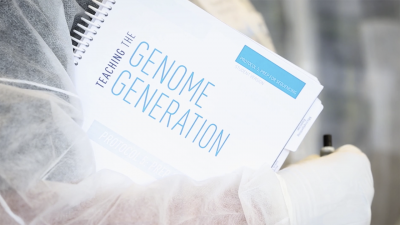BioBuilding: A traveling exhibit for future biomedical engineers
-
Project Description
BioBuilding: A traveling exhibit for future biomedical engineers Sciencenter The Sciencenter will develop a traveling exhibition on biomedical engineering for small to mid- sized museums across the nation, bringing together graduate students and faculty from Cornell University’s Meinig School of Biomedical Engineering and experts in exhibit development and reaching rural audiences from the Sciencenter and the University of Montana spectrUM Discovery Area to develop hands-on learning experiences that improve public understanding and appreciation for biomedical engineering and its impact on public health. BioBuilding will engage non-expert audiences through a hands-on exhibition and supporting interactive activities that highlight ongoing research and applications from biomedical engineering that are improving human health. This project will increase knowledge and interest in biomedical engineering amongst rural youth 6-12, with a longer-term goal of encouraging career development in this and related STEM fields by supporting a more comprehensive, diverse pipeline.
-
Abstract
BioBuilding: A traveling exhibit for future biomedical engineers The Sciencenter, Cornell University’s Meinig School of Biomedical Engineering, and SpectrUM Discovery Museum will develop a traveling exhibition on biomedical engineering for small to mid-sized museums nationally. The 1,500 square-foot bilingual (English/Spanish) exhibition and supporting programs will use hands-on learning experiences to target youth ages 6-12 and their families to foster a greater understanding of biomedical engineering and the innovative ways it is used to address issues in medicine, public health, and health equity. The project will be co-developed by the Sciencenter and Cornell University graduate students, immersing Sciencenter staff in biomedical engineering content, while strengthening graduate students’ ability to communicate their research to museum audiences. Long-Term Objectives 1) Generate knowledge of and interest in biomedical engineering careers among rural youth ages 6-12 and their families; 2) Generate increased understanding within the general public of how biomedical engineers improve health; 3) Encourage graduate students to continue to connect with museums throughout their careers as a way to engage the public with important biomedical engineering content. Specific Aims This project supports the National Institute of Health’s strategy to “enhance the training of a workforce to meet the nation’s biomedical, behavioral and clinical research needs” by targeting youth and families in rural communities, communities that are often underserved in STEM. This project also aims to improve science communication skills among participating Cornell University graduate students. Research Design and Methods The project will use evidence-based methods of exhibit design and inquiry-based learning to co-develop a traveling exhibition and supporting programs with Sciencenter staff and Cornell graduate students, which will tour nationally. Front-end evaluation and iterative prototyping with target audiences will inform framing and entry points for biomedical engineering content. Standardized activity guides and take-home kits will extend learning experiences into the classroom, community, and homes of visitors.






